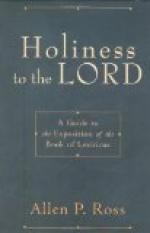The effort has been made in the description given to cover the process of making paper from the crudest rags. In enumerating the several kinds of paper in another chapter, brief reference will be made to the varying methods required in their manufacture. In this chapter, no attempt has been made to cover more than the principal divisions or varieties of paper—writing, print, and wrapping papers.
The United States, with characteristic enterprise, leads the world in paper-making, supplying about one-third of all that is used on the globe. The city of Holyoke, in Massachusetts, is the greatest paper center in the world, turning out each working-day some two hundred tons of paper, nearly one-half of which is “tub-sized,” “loft-dried” writings. The region in the vicinity of Holyoke is dotted with paper-mills, and within a few miles of the city is made about one-half of all the “loft-dried” writings produced in the United States. The tiny acorn planted two centuries ago has waxed with the years, gaining strength and vigor with the increasing strength of the nation, till now it has become a giant oak, whose branches extend to the lands beyond the seas.
FOOTNOTES:
[Footnote 5: From The Story of Paper-making, Chapter V.J.W. Butler Paper Company, Chicago, 1901.]
THE EXPOSITION OF AN IDEA
THE GOSPEL OF RELAXATION[6]
William James
I wish in the following hour to take certain psychological doctrines and show their practical applications to mental hygiene,—to the hygiene of our American life more particularly. Our people, especially in academic circles, are turning towards psychology nowadays with great expectations; and, if psychology is to justify them, it must be by showing fruits in the pedagogic and therapeutic lines.
The reader may possibly have heard of a peculiar theory of the emotions, commonly referred to in psychological literature as the Lange-James theory. According to this theory, our emotions are mainly due to those organic stirrings that are aroused in us in a reflex way by the stimulus of the exciting object or situation. An emotion of fear, for example, or surprise, is not a direct effect of the object’s presence on the mind, but an effect of that still earlier effect, the bodily commotion which the object suddenly excites; so that, were this bodily commotion suppressed, we should not so much feel fear as call the situation fearful; we should not feel surprise, but coldly recognize that the object was indeed astonishing. One enthusiast has even gone so far as to say that when we feel sorry it is because we weep, when we feel afraid it is because we run away, and not conversely. Some of you may perhaps be acquainted with the paradoxical formula. Now, whatever exaggeration may possibly lurk in this account of our emotions (and I doubt myself whether




